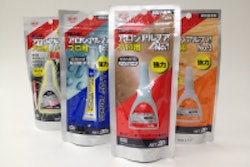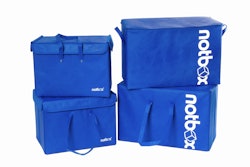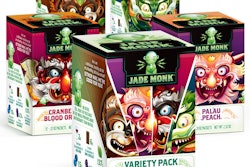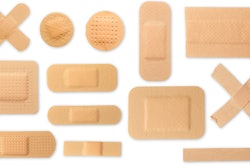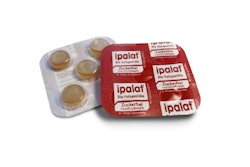
A next-generation liquid dispensing and delivery system features a collapsible rigid liner inside a bottle that can change the way sensitive chemicals and other products are delivered. Known as BrightPak®, the system from ATMI, Inc. offers an
alternative to large glass bottles and other traditional systems that store and dispense photolithography chemicals used in the manufacturing of semiconductors, LEDs, and flat panel displays. ATMI is offering these delivery systems to chemical suppliers who desire improved safety and performance with cost benefits.
To help create a commercially viable package from an innovative design, ATMI relied on Plastic Technologies, Inc. (PTI) , a package engineering firm with experience in advanced manufacturing techniques and tailored production process development. Together, the companies overcame multiple structural and production challenges to make commercialization of BrightPak systems a reality.
The BrightPak system’s primary components are created from two separate preforms. The polyethylene terephthalate (PET) preform is used to blow-mold a bottle with a capacity of 4.6 L. The second preform is made from polyethylene naphthalate (PEN) and is used to create the rigid, three-dimensional collapsible interior “liner” that holds the chemicals.
The primary objectives for the interior rigid liner were that it had to collapse at low pressure without tearing, be compatible with various chemicals and dispense 99% of the product. The bottle around it had to withstand six times the dispensing pressure (greater than 90 lb/sq in.) to provide an additional safety cushion.
Additionally, the system needed to withstand shipping and storage conditions down to -20°F and also block out 99.9% of light from 190-425 nanometers which is in the ultraviolet (UV)-to-visible range. The inner PEN and outer PET (with amber colorant) components deliver just that.
However, one of the biggest issues was the “ship in a bottle” challenge of how to place the rigid inner PEN liner into the outer PET bottle.
“PTI was an excellent development partner for our BrightPak product. We worked together to create a system that was commercially-viable and economically feasible,” says Chris Kramer, senior vice president of materials solutions, ATMI. “BrightPak technology is an innovation that reduces customer risk and delivers improved safety and performance. The BrightPak system is a safer, cleaner, better packaging alternative.”
The two-piece assembly fits into a third component—a blow-molded, full-body PET “base cup.” Because the PET bottle has structural panels that make labeling challenging, the textured full-body cup facilitates branding options and also provides a stable base for the bottle’s slightly-rounded bottom. Its amber color provides another layer of UV and shipping protection.
The BrightPak package dispenses liquids using pressure (direct or indirect) or pump systems. It is specifically designed to eliminate the sources of bubble formation and particle defects caused by pump and vacuum delivery containers. Drive gas can be applied between the rigid liner and the bottle. Once in this space, the pressure from the gas squeezes the rigid liner causing it to collapse and force the chemical out of the bottle. The system dispenses the chemical through a sealed pathway from the liner to the dispense tool. It also protects the chemical contents from external contamination. The rigid liner eventually collapses fully and ensures optimal dispense results.
The BrightPak technology, which ATMI also refers to as a “double containment” system, offers users multiple benefits, including approximately 21% additional volume compared to the typical one-gal glass bottle used in lithography applications today. (Glass typically has thicker sidewalls and often a longer neck, which negatively impact fill volume.) The higher fill volume is possible without impacting labeling surface, the handle location, or the physical dimension of storage and usage locations.
Additional advantages include exceptional chemical protection from environmental factors, as well as accidents and operator errors. Unlike glass bottles, the BrightPak system is made from shatter-resistant plastic resins minimizing the chance of costly chemical spills and production shutdowns. (Filled BrightPak containers have successfully passed drop tests ranging between four and eight ft.) The system also reduces the amount of chemical residuals requiring disposal.
ATMI believes its BrightPak liquid delivery system is ideally suited for applications beyond those originally intended and it is interested in pursuing licensing opportunities. Potential markets include adhesives, pharmaceutical, food, beverage, and others.The resin used for each layer can be altered depending on performance requirements.
